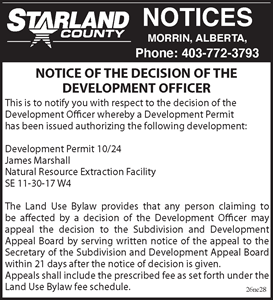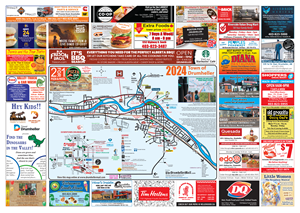
In a town like Drumheller, you’d think that a palaeontology course would be one of the first option courses to be added to the high school curriculum.
But it took decades before Drumheller Composite High School sciences teacher Jason Rasmussen was asked to put together Palaeontology 15, DCHS’ first venture into dinosaur-based education for students in the valley.
“Word has spread, and it’s well received,” said Rasmussen about the program, which was introduced in 2006.
“The interest has surprised me every year, and I would like to think that everyone who’s taking it is out of pure and genuine intrigue about palaeontology.”
Each year the Paleo 15 class has a full class of students ready to study the life of the planet, the rise and fall of the ancient monsters the people of the valley know all too well.
Rasmussen, the high school’s biology and science teacher, has always been interested in palaeontology, and when the Golden Hills School Division asked him to spend a summer prepping the course, he was all for it.
The Royal Tyrrell Museum worked closely with him over the summer, helping develop the initial course outline.
“The Tyrrell has been excellent in regards to offering workshops.”
He had the honour of spending a summer “putting the flesh and bones” onto the course that went on to receive several awards for the program, and the interest is not only within Drumheller.
“The palaeontology word has spread, and has been very well received in schools within and without the division,” Rasmussen said. He often teaches to other schools through video conferencing programs. “Outside of Drumheller, these interests are represented by the warm reception it’s received.”
Designing the course has given Rasmussen the background and comfort to engage the students with the same passion he’s found for the Earth’s past.
“When you say paleontology, it is wrongfully synonymous with dinosaurs. It’s the study of past life.”
With the overlap between the existing biology courses and palaeontology, Rasmussen said it’s one of the ideas that the educators at the museum and DCHS shared.
It was intended to be a Grade 10 introductory course, and acts as a gateway to the other high school sciences.
The principles taught in Paleo 15 tie in directly with the Bio 20, Chem 20, or the Science 10 curriculum.
“When you start talking about radiometric dating of carbon-14, there is an obvious tie in to chemistry.
“There are a lot of scientific doors opened through the paleontologic medium."
For now, Paleo 15 has been approved as a continuing course to be offered at the school, and it fills the classroom to the maximum limit every semester.
“Paleo 15 is alive and strong.”
Palaeontology 25 had been developed, not by Rasmussen, and offered once, and it can be offered again if the resources are available.
The thought is to eventually develop a Palaeontology 35 course which could allow students to earn credits at post-secondary institutions, but for now Paleo 15 is satisfying both the teachers' and students' needs.
“I don’t understand how someone wouldn’t be intrigued about the mass extinction at the end of the Permian period... If that doesn’t get you thinking about what and how the creatures survived, that’s alien to me. These things should be universal.”
Palaeontology is a natural choice for DCHS, and other area schools, to offer their students.
Every person living in Drumheller is directly or indirectly exposed to paleontology in their day-to-day lives, whether it be the cheekily coloured dinosaurs that dot the roadways or the legion of tourists climbing the mouth of the dinosaur who constantly watches over the Red Deer River valley, the people here live it.











































